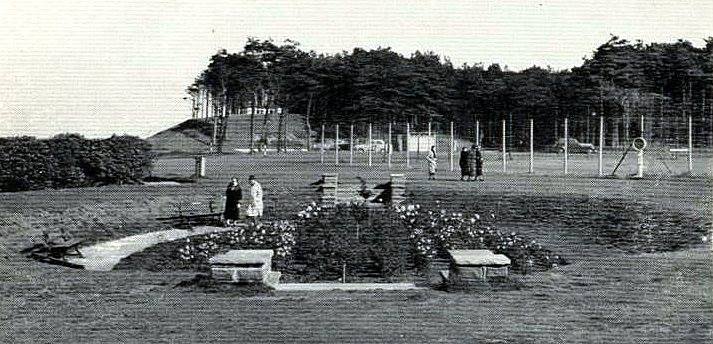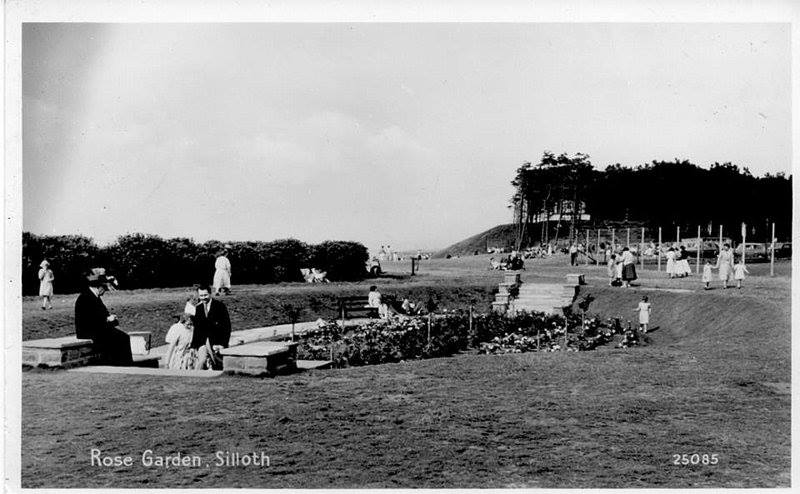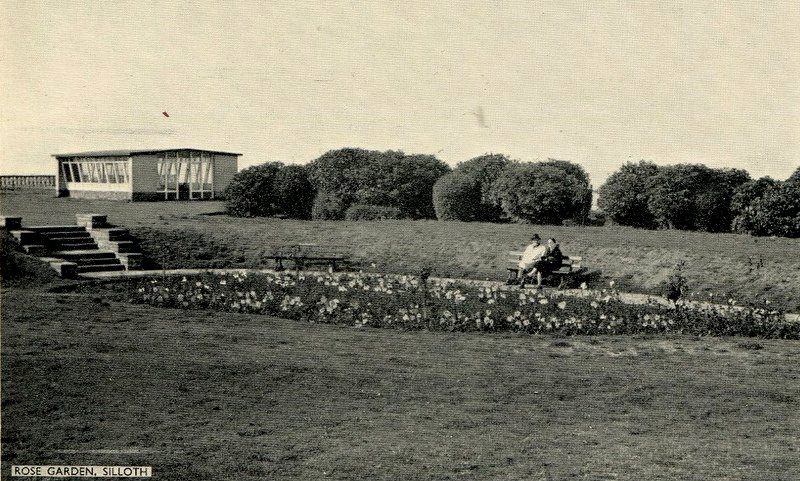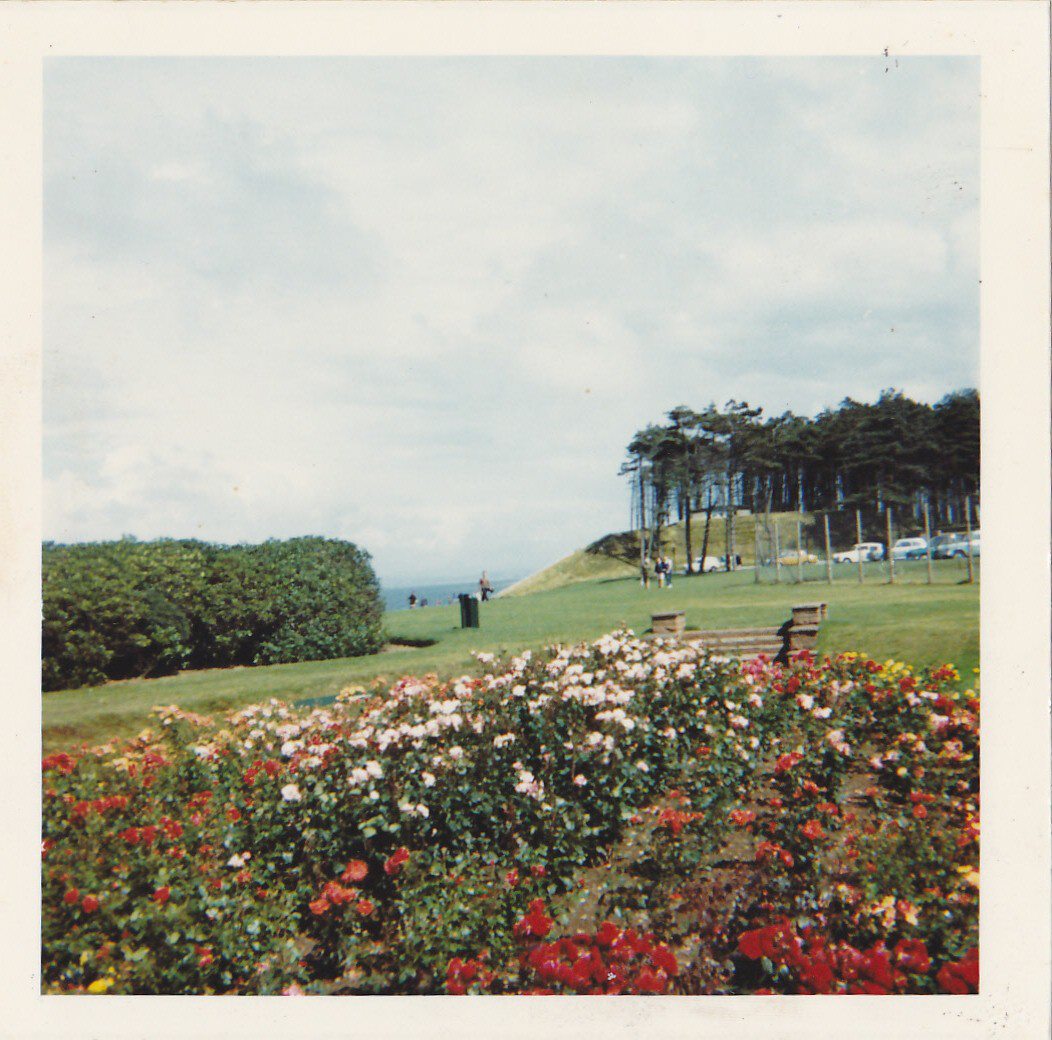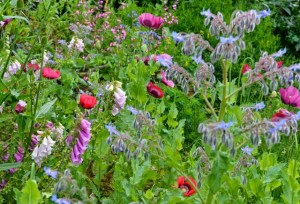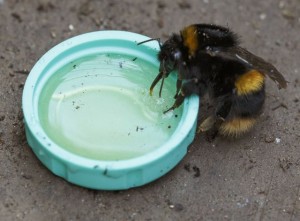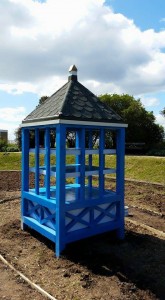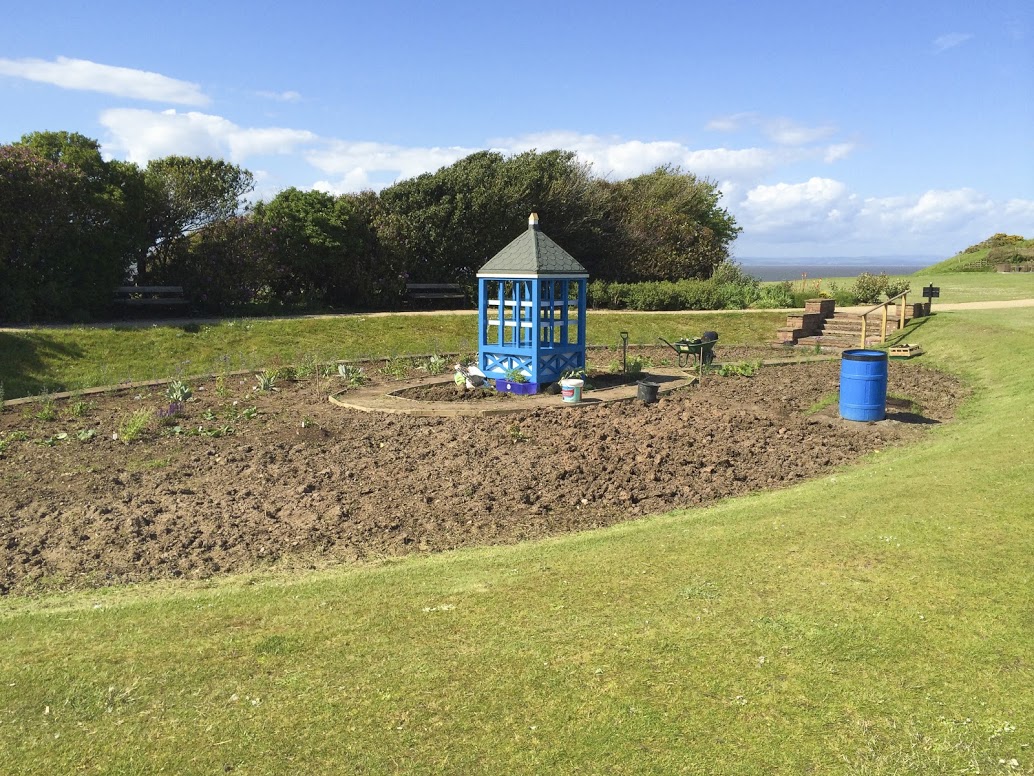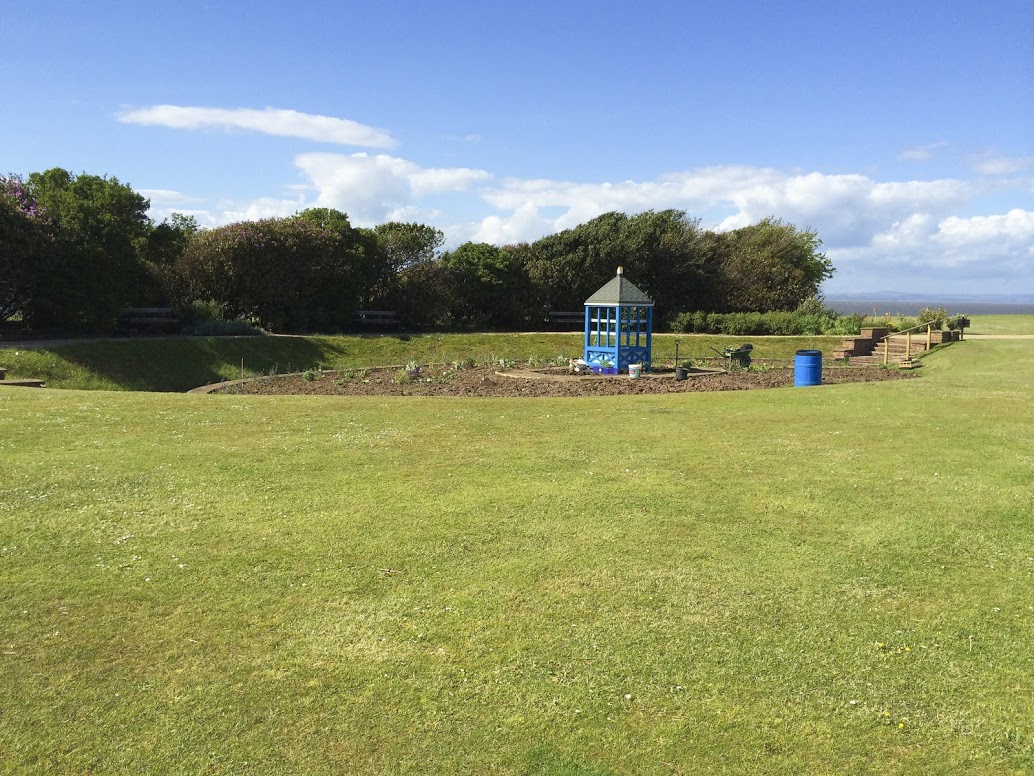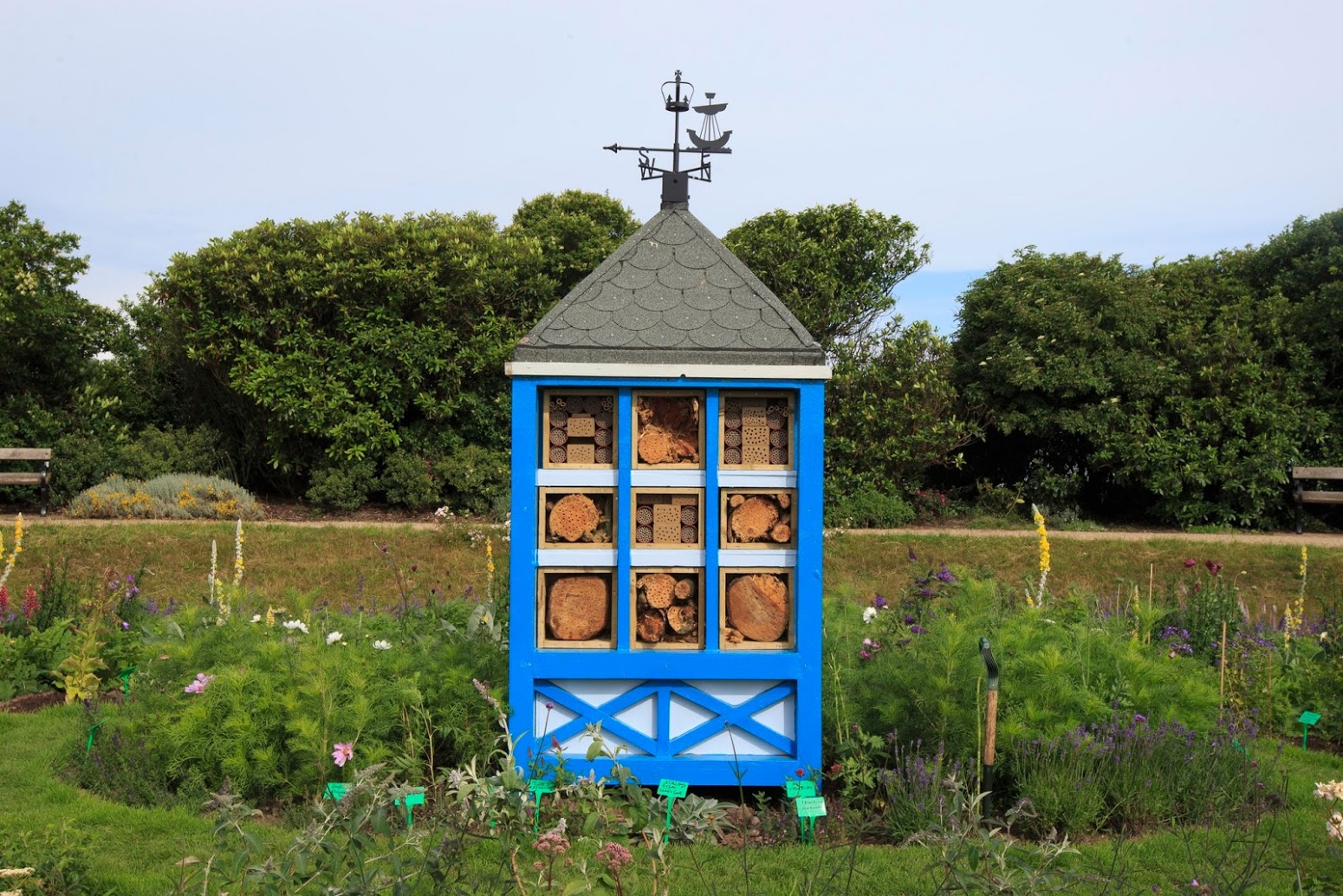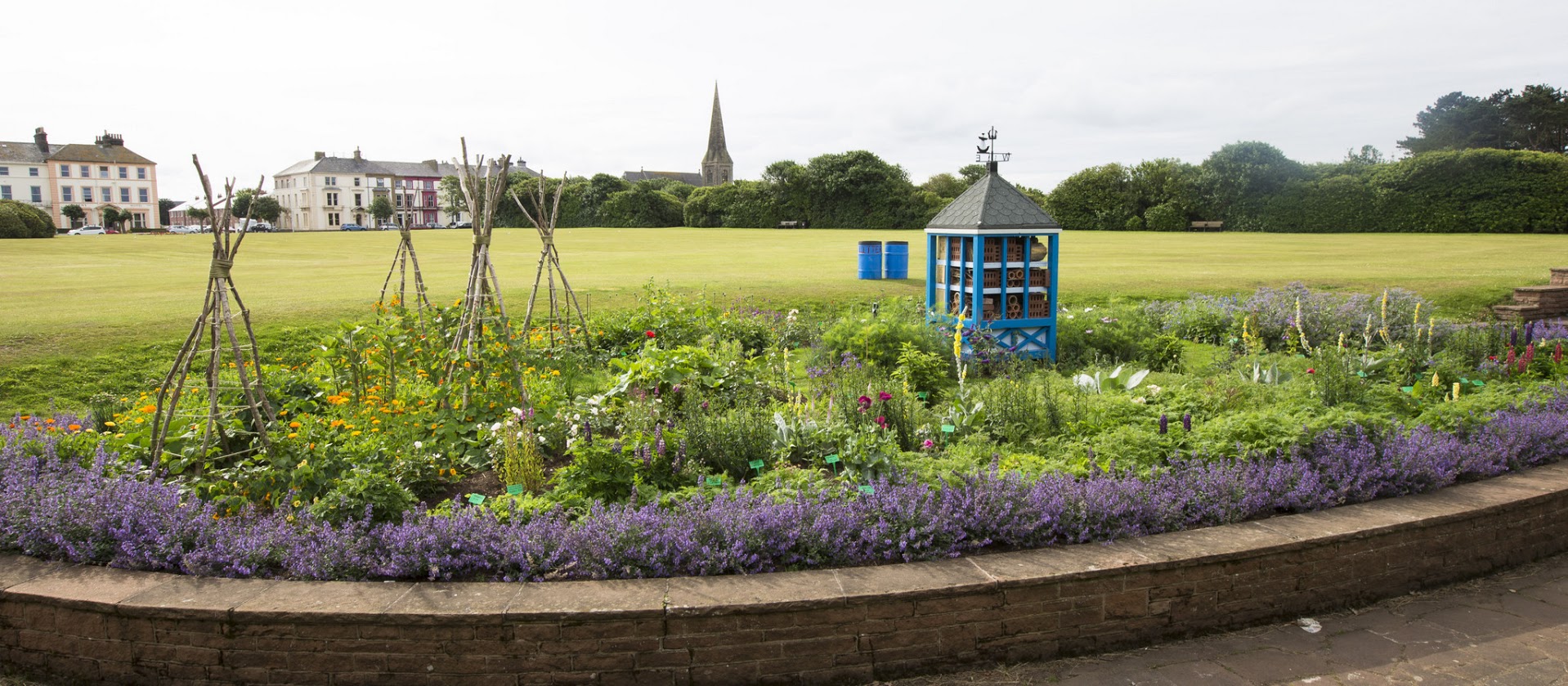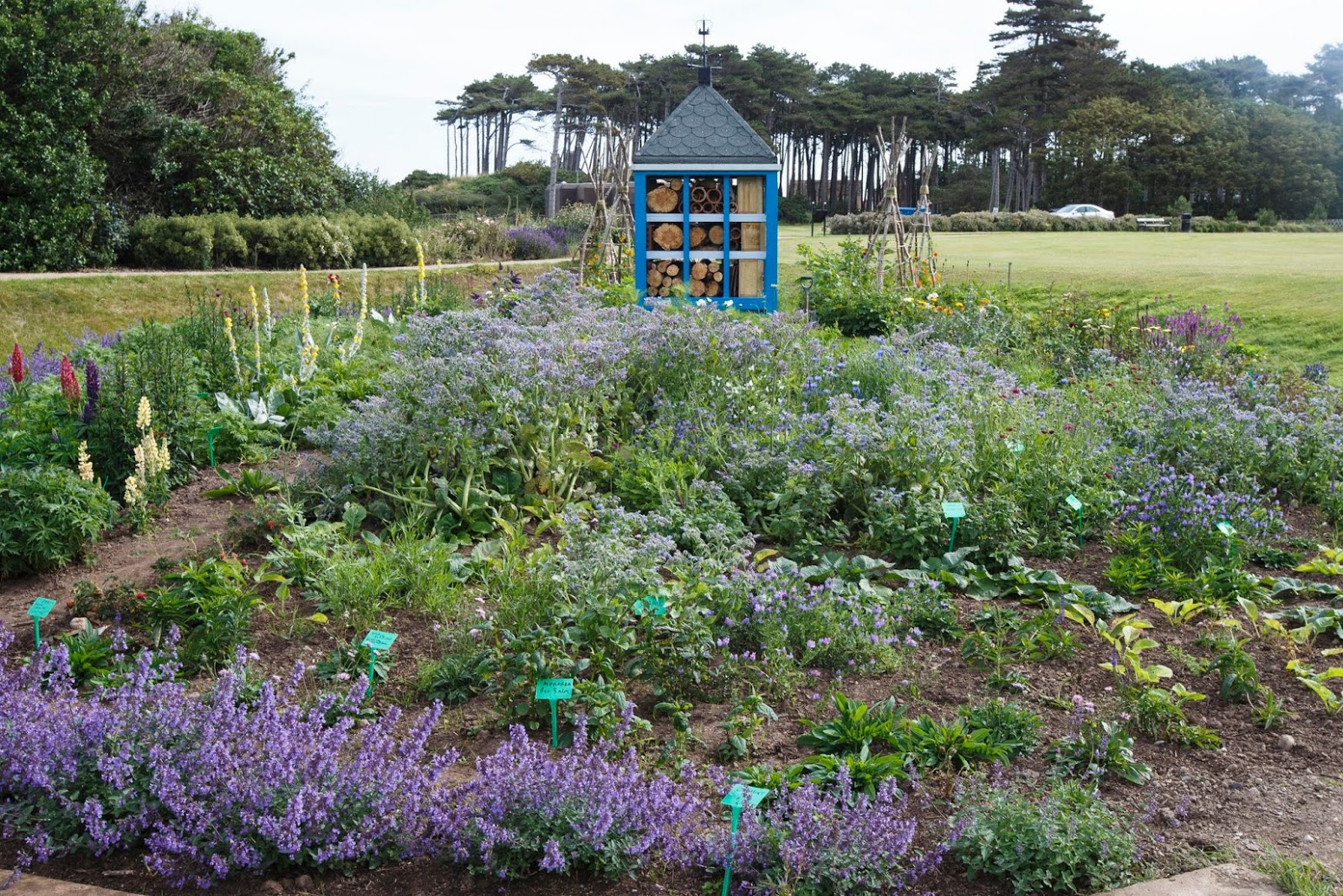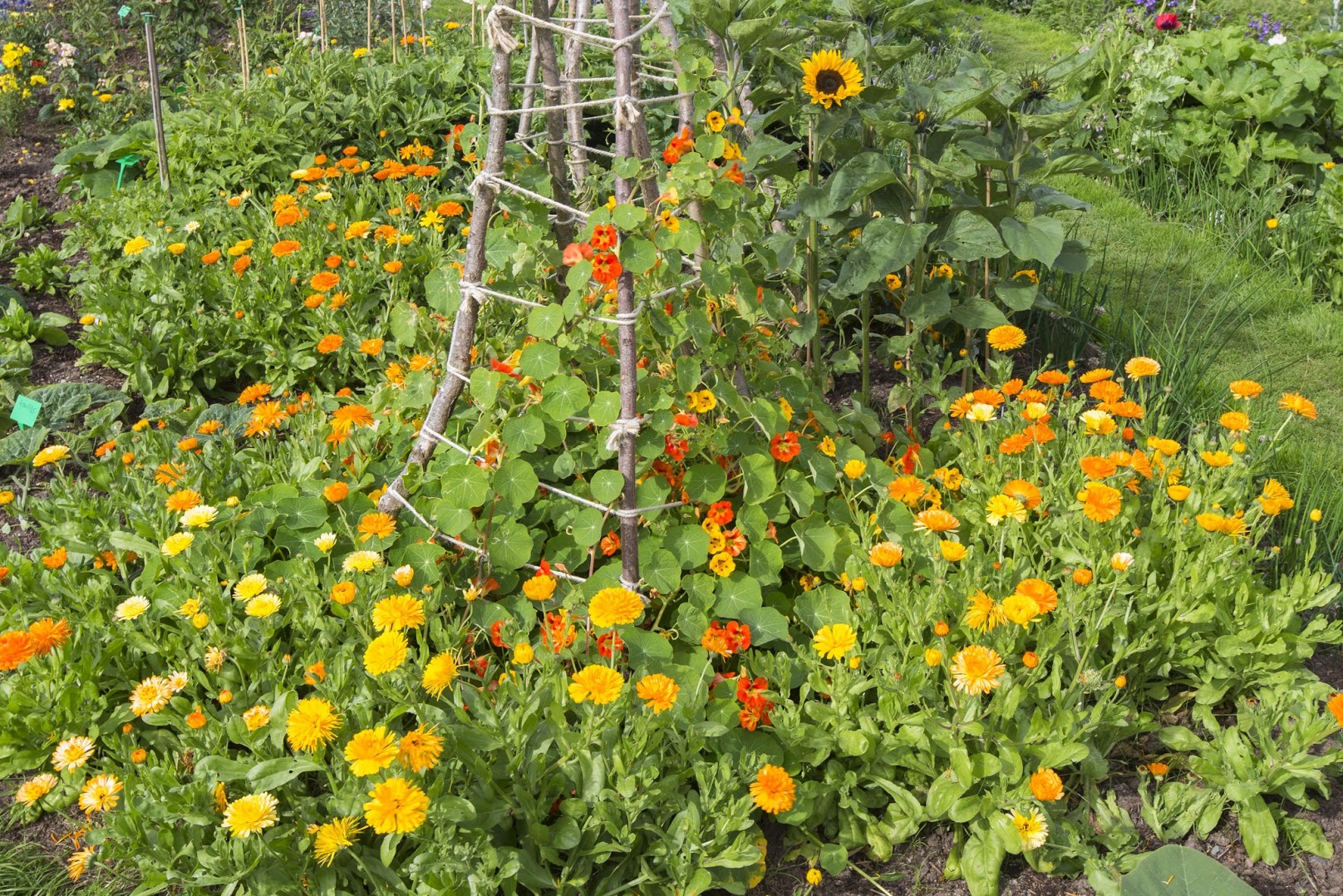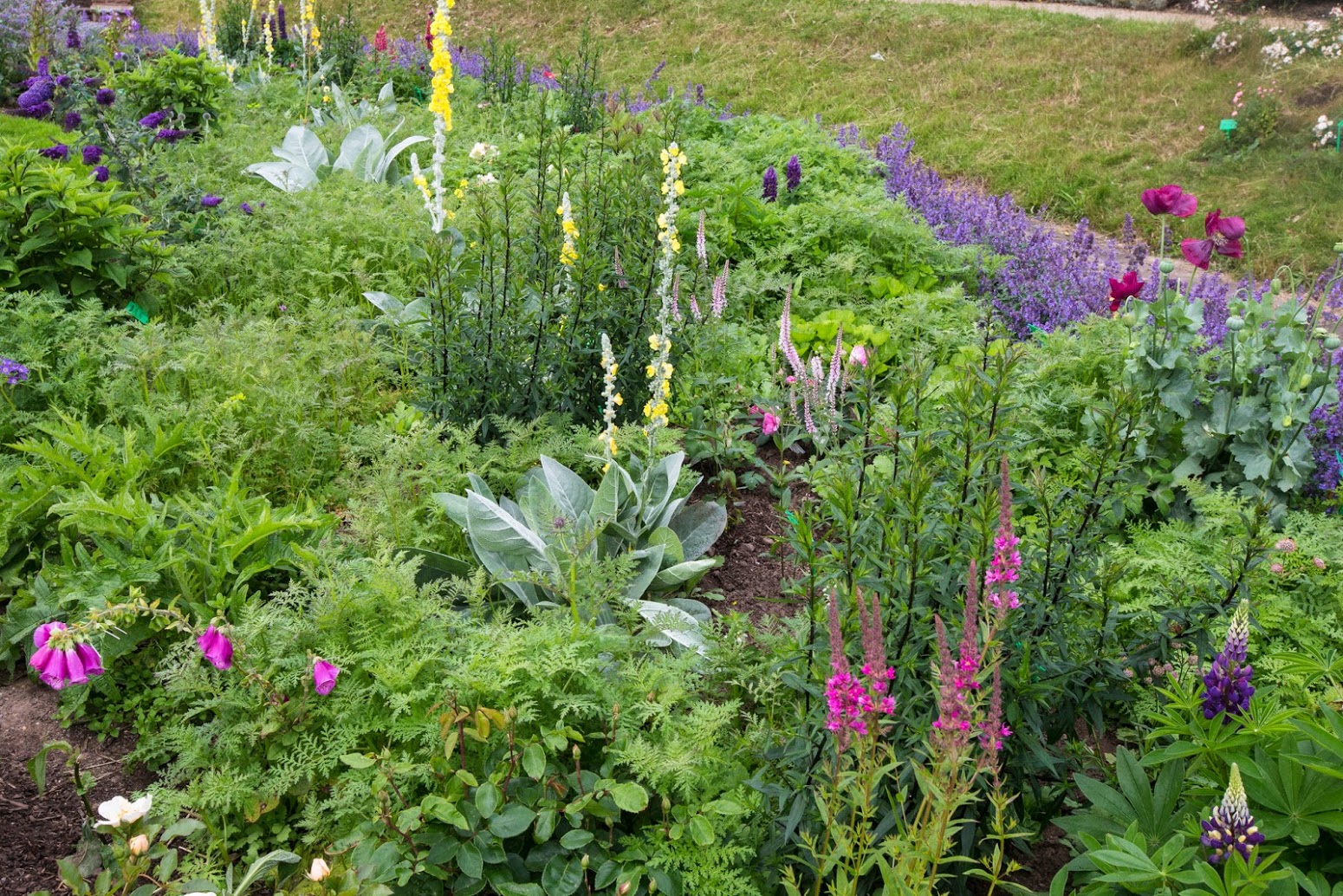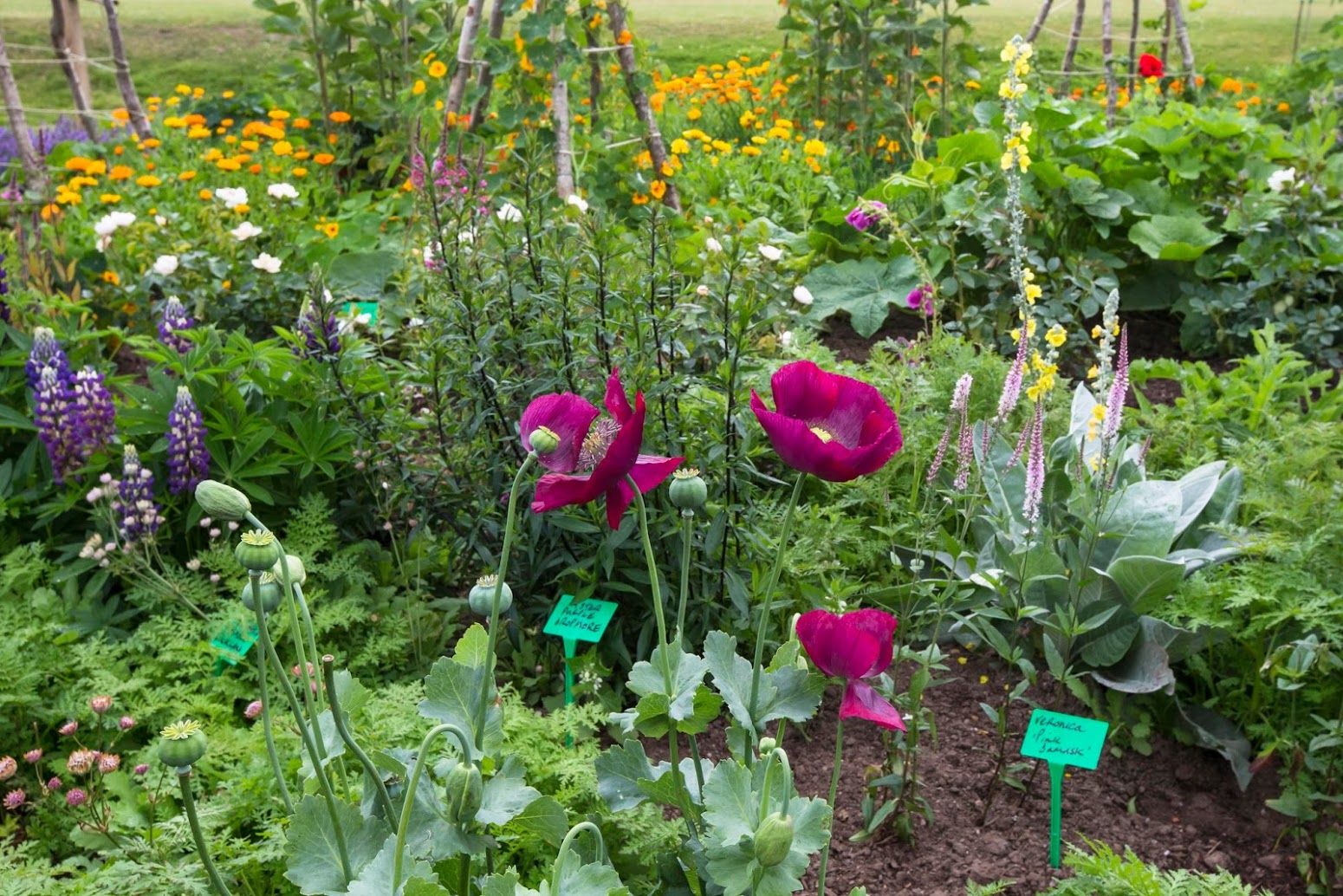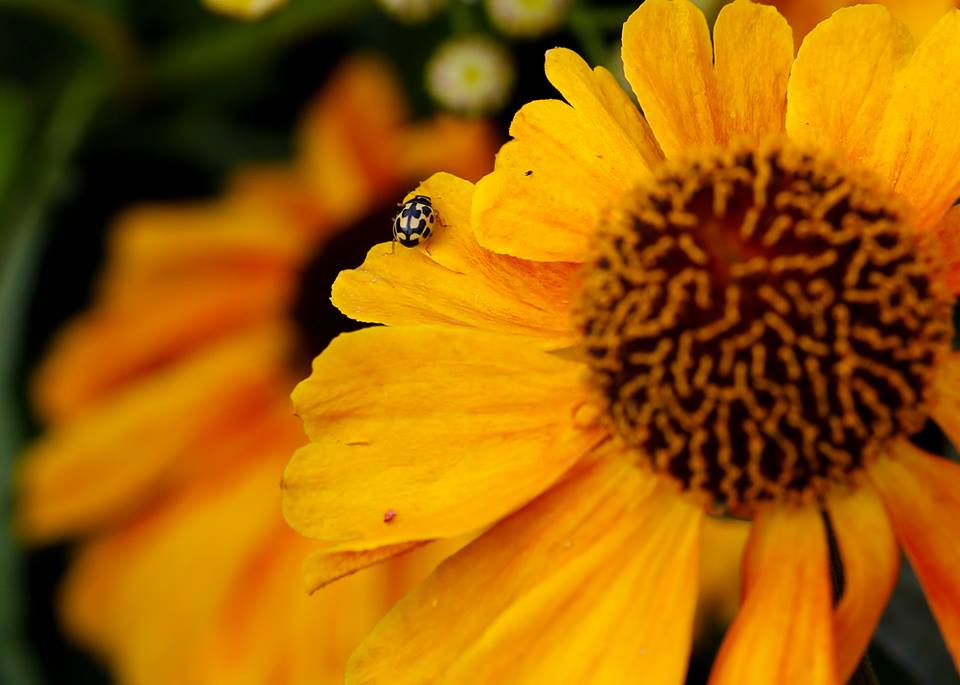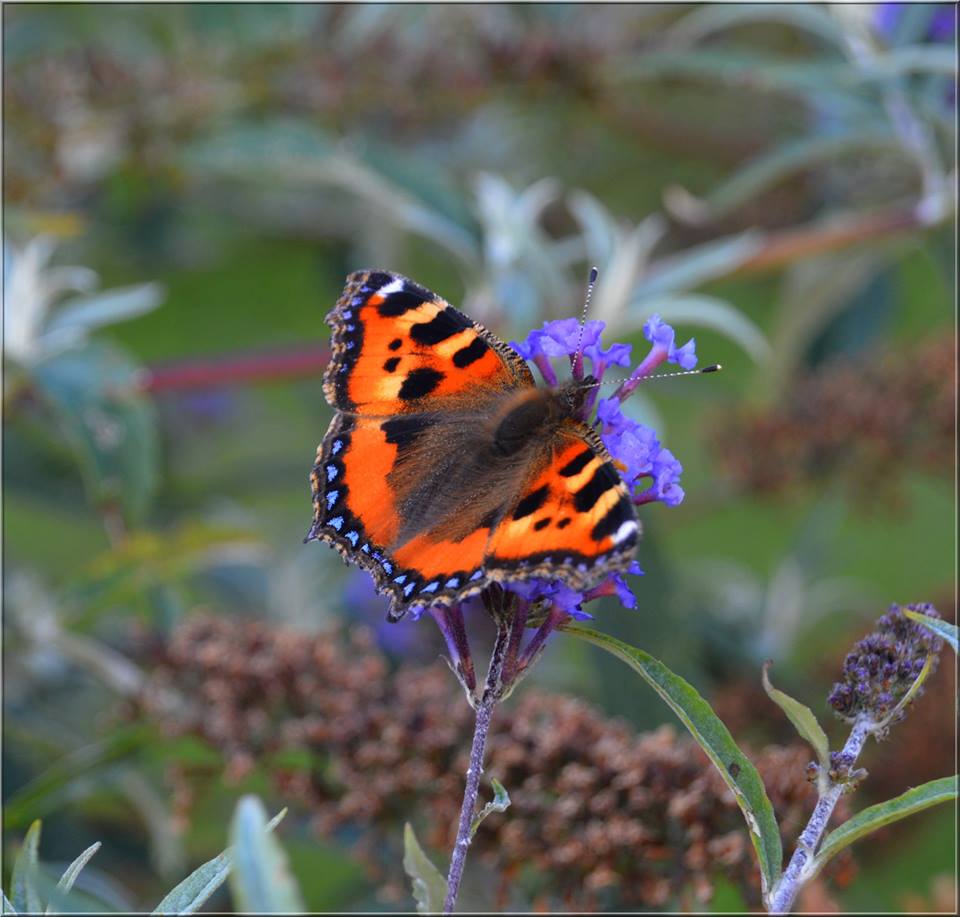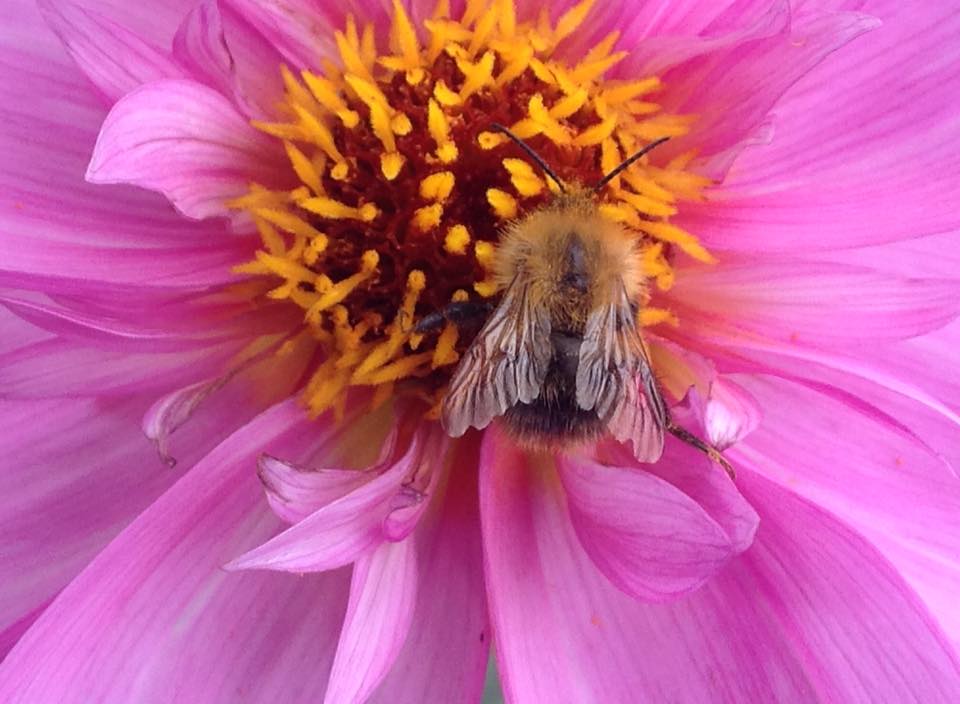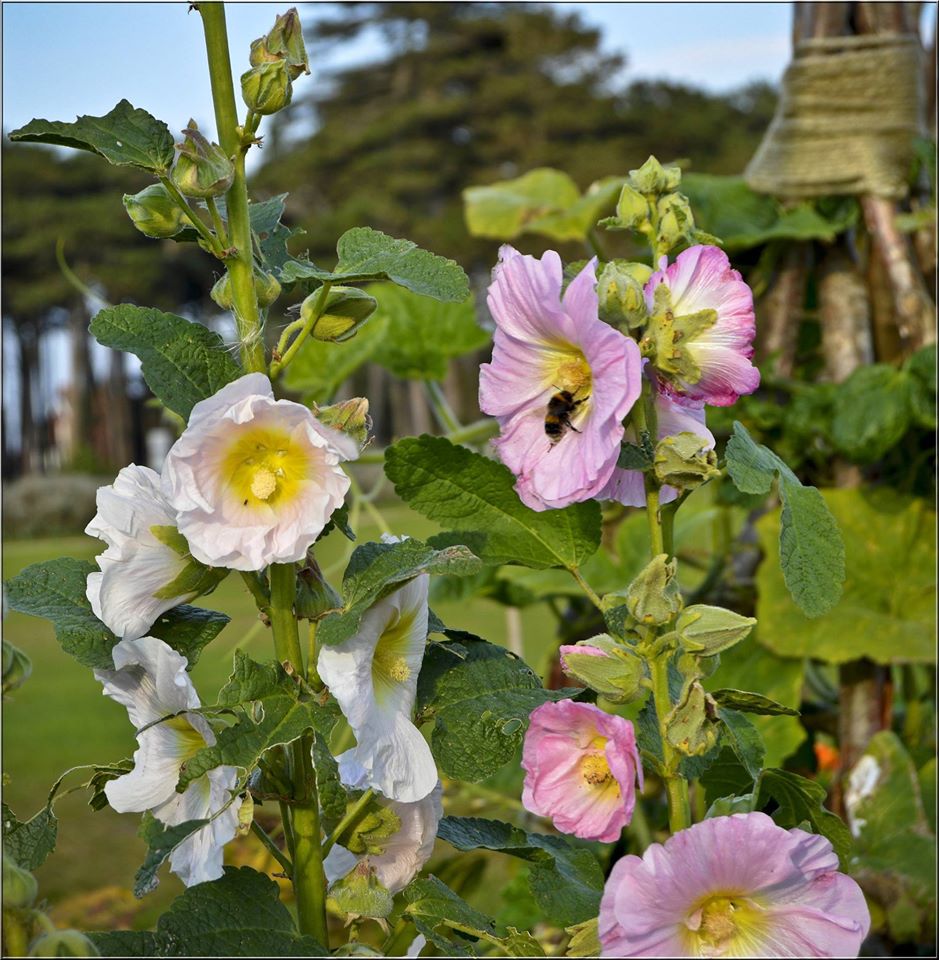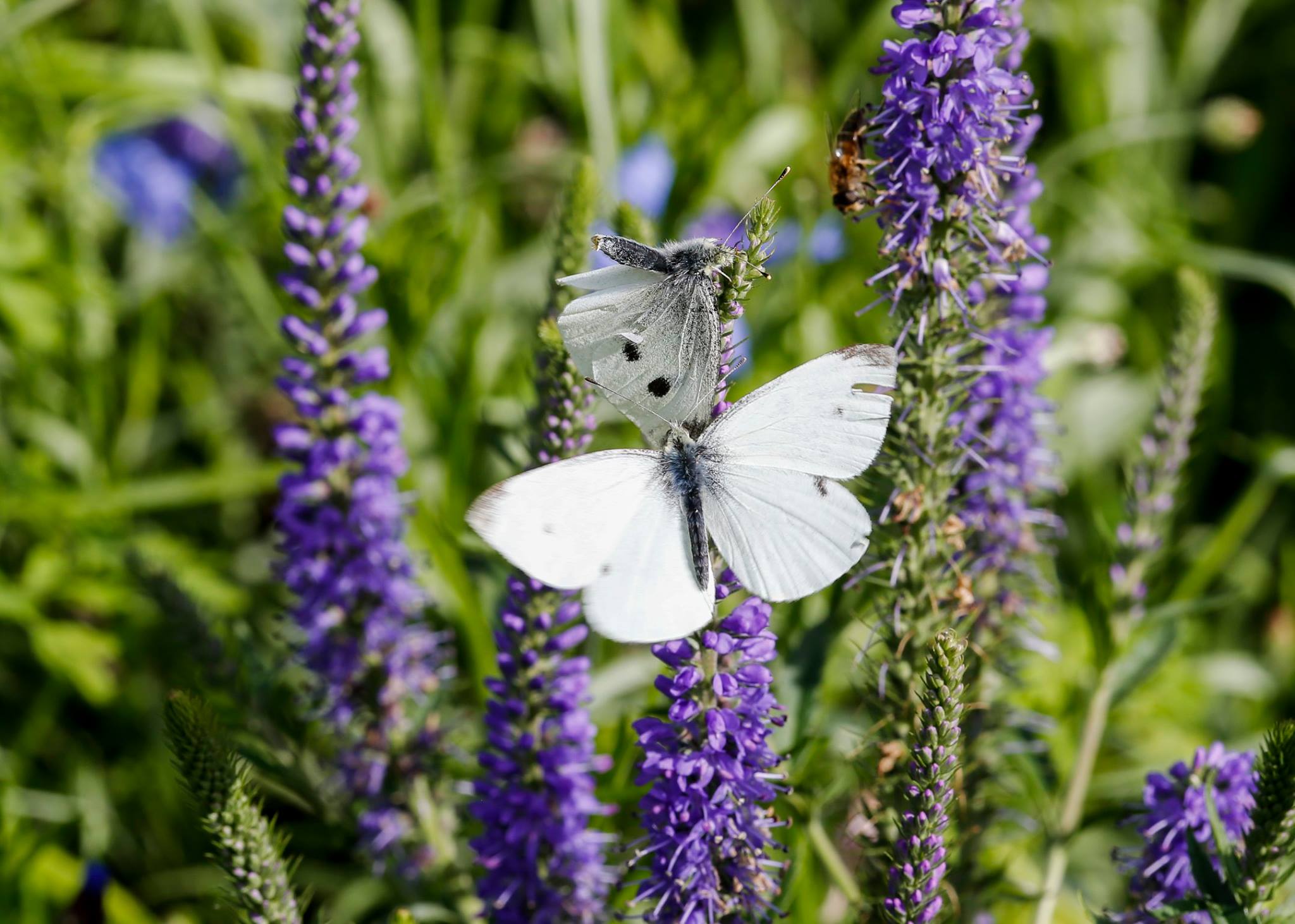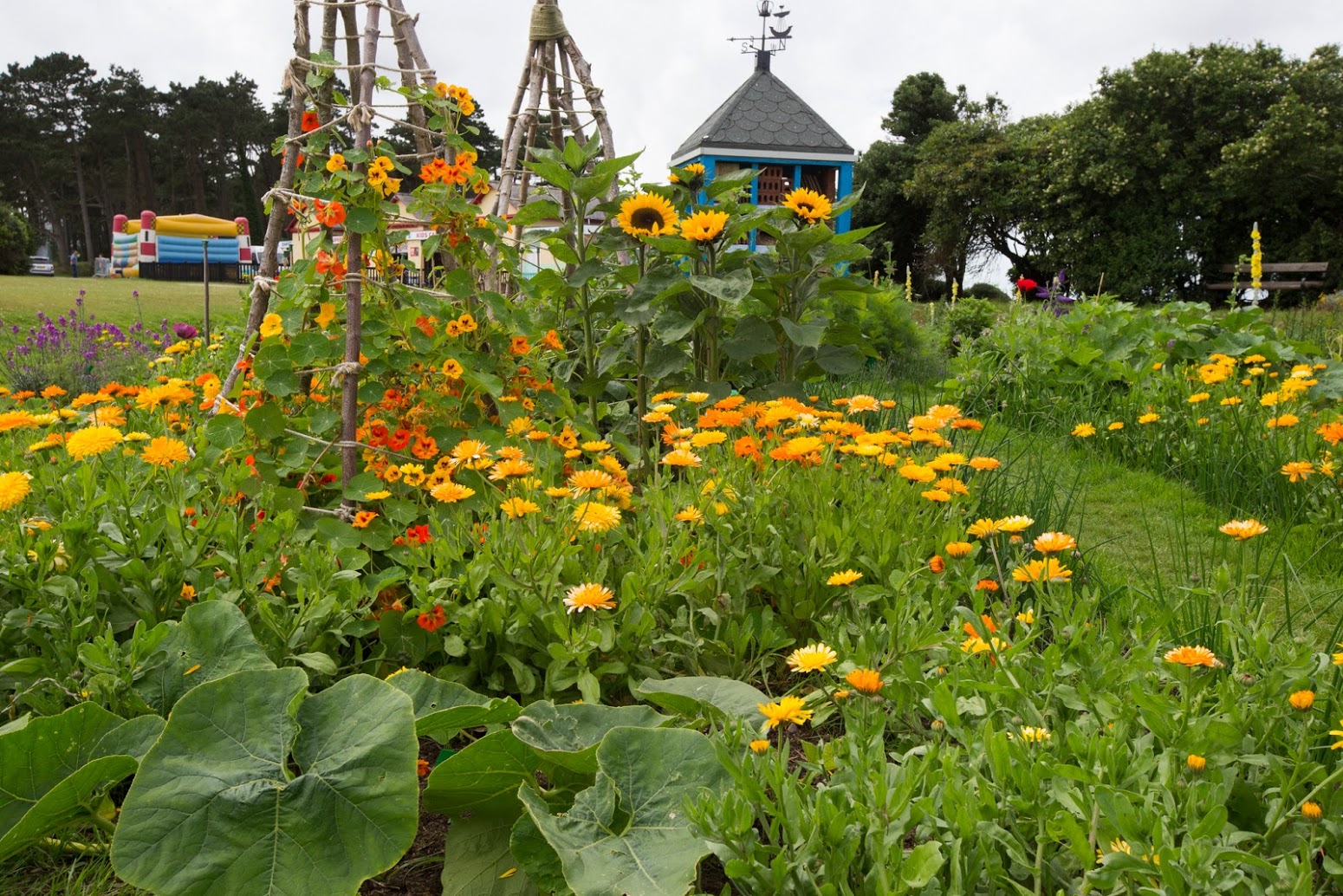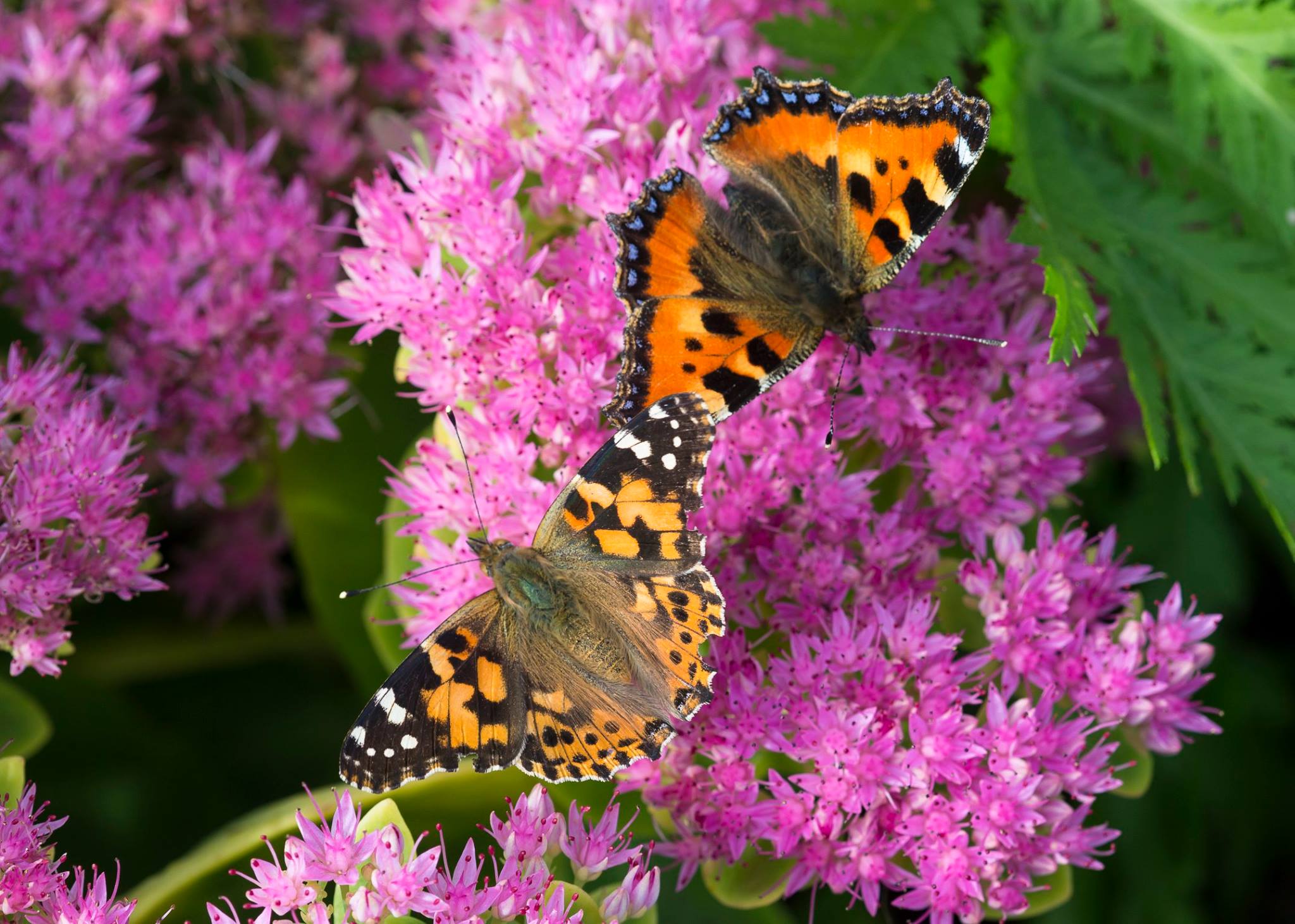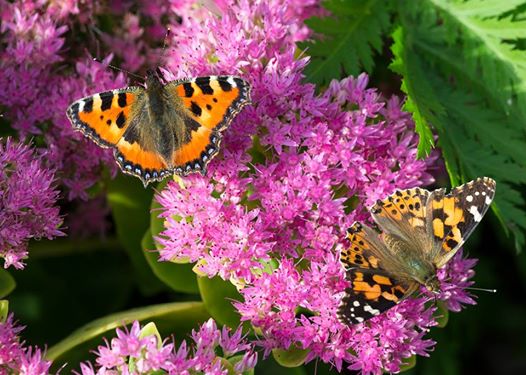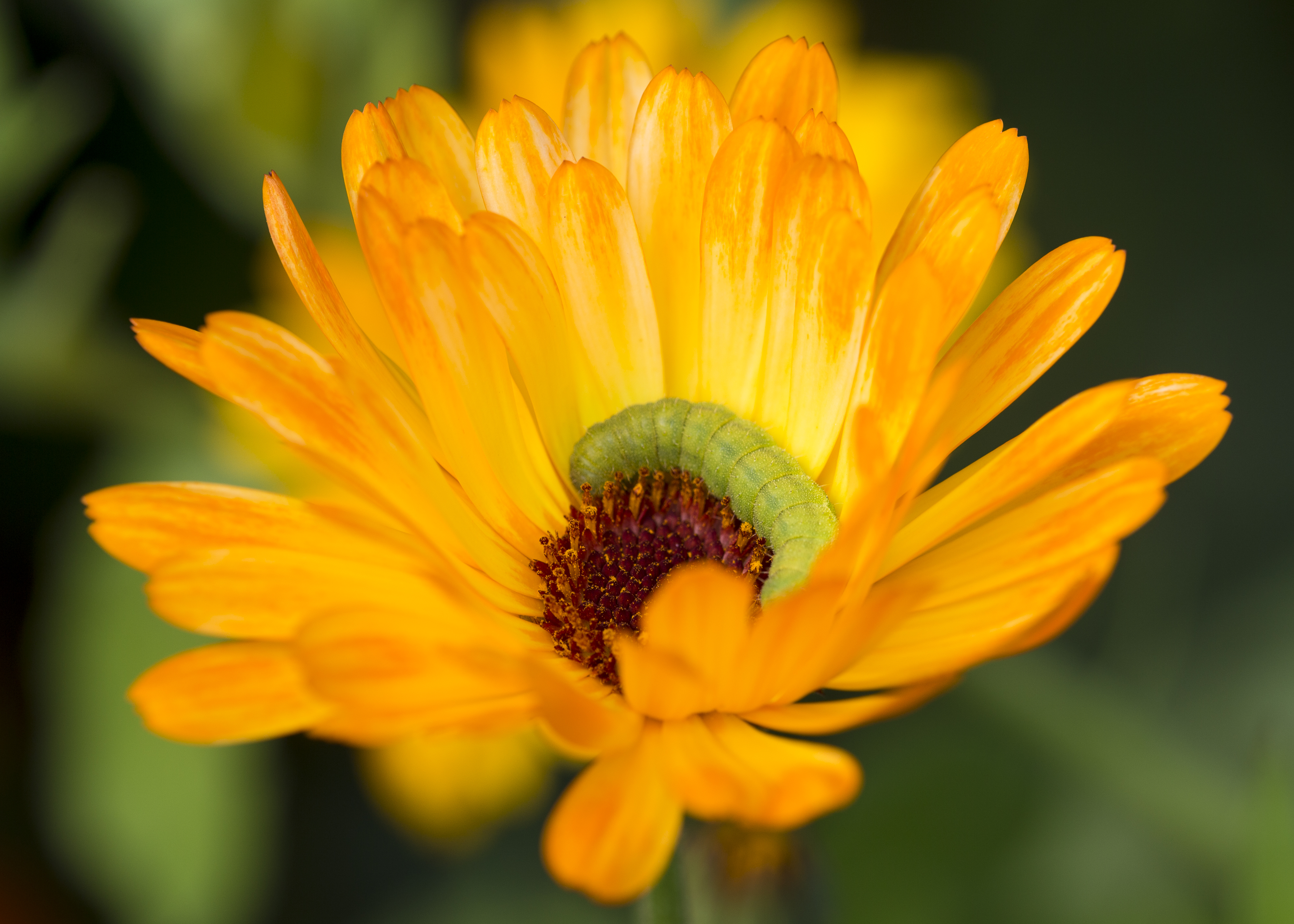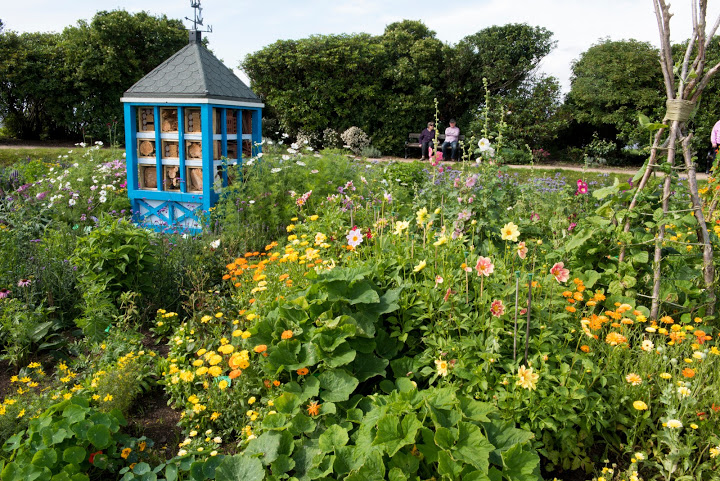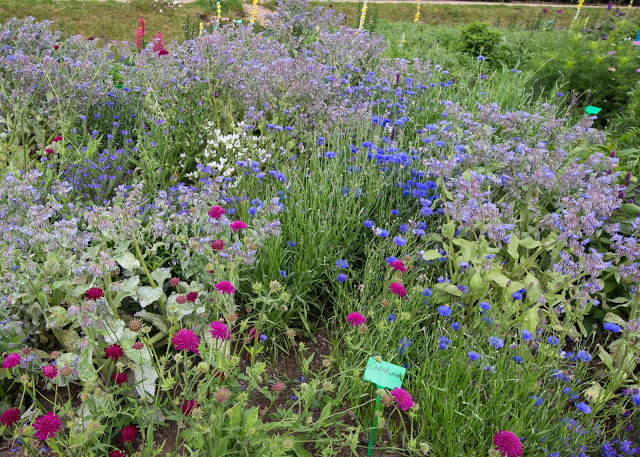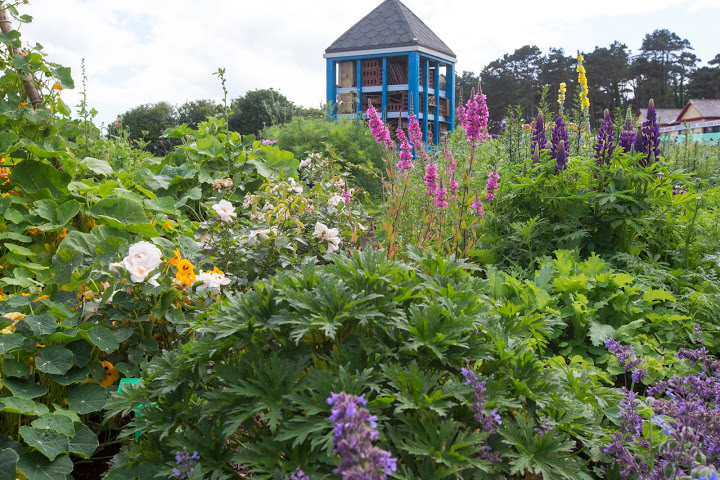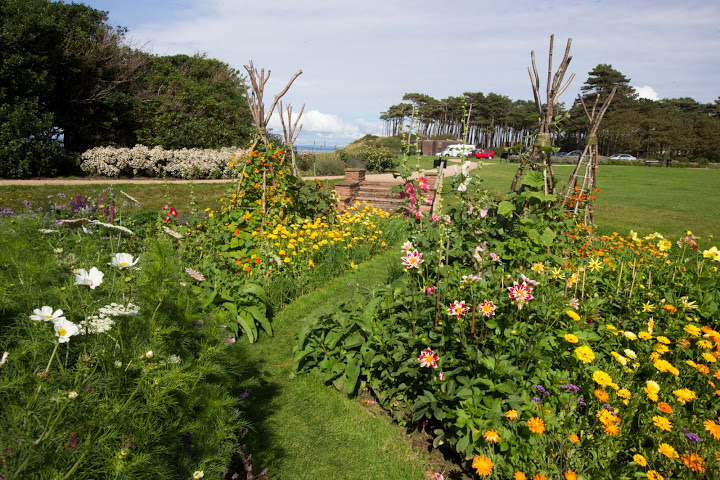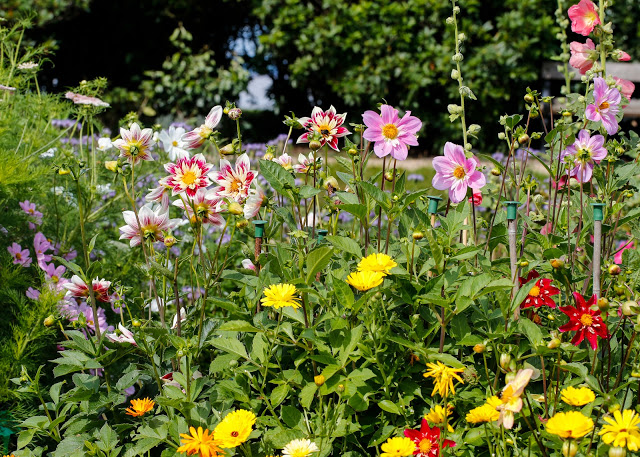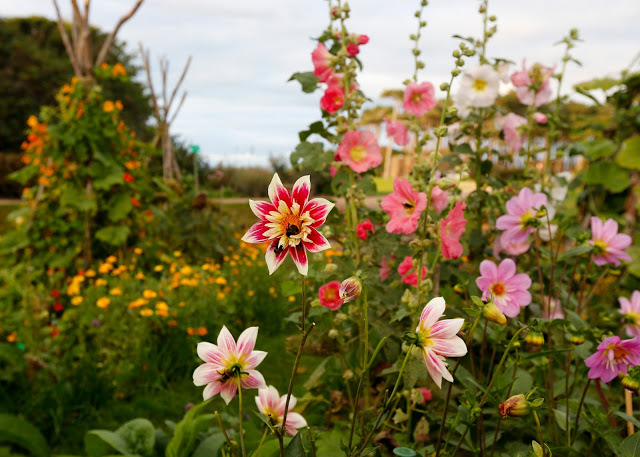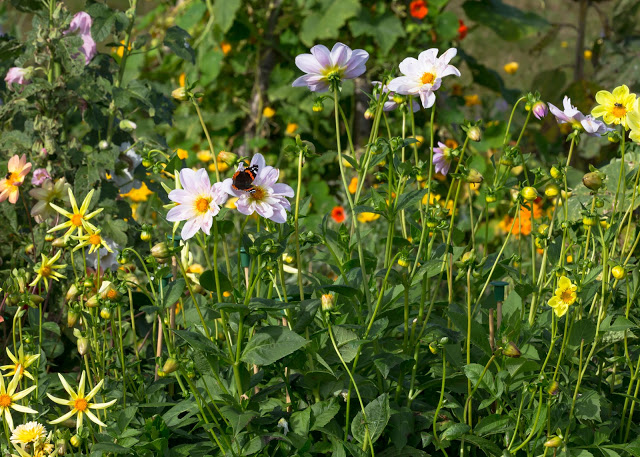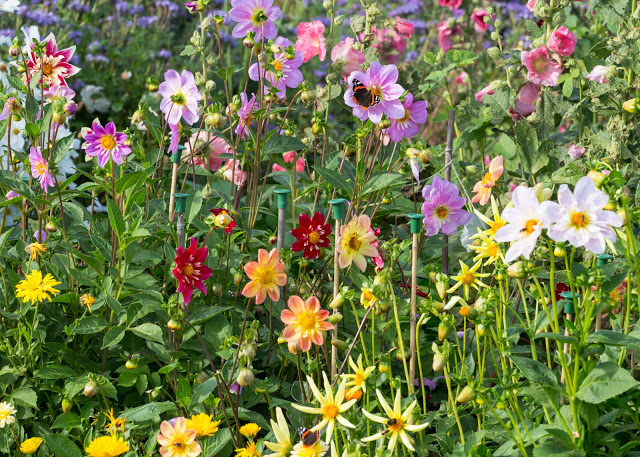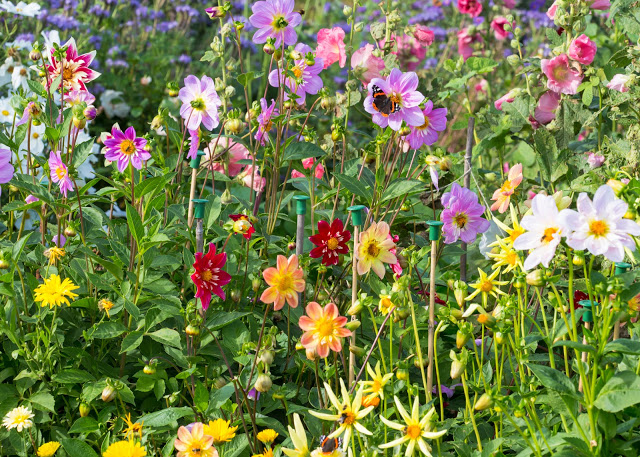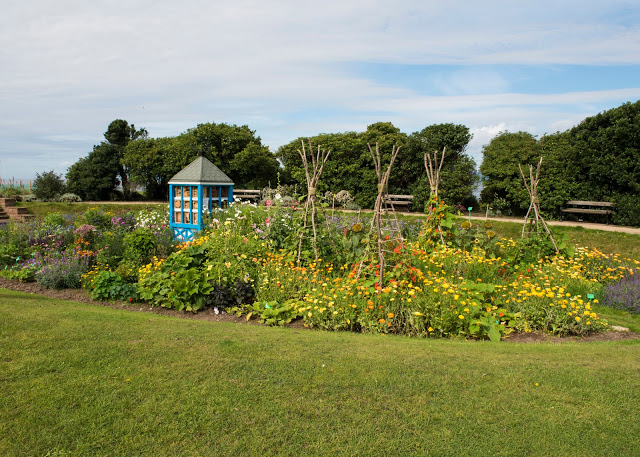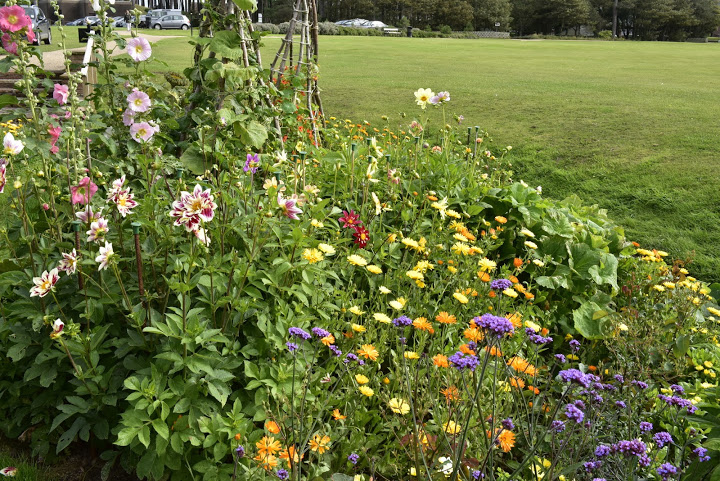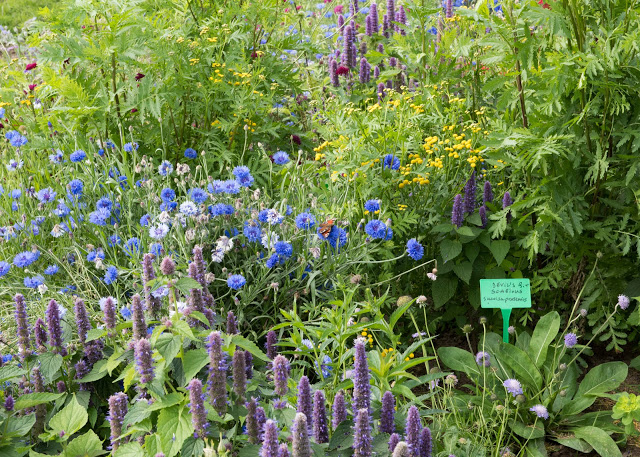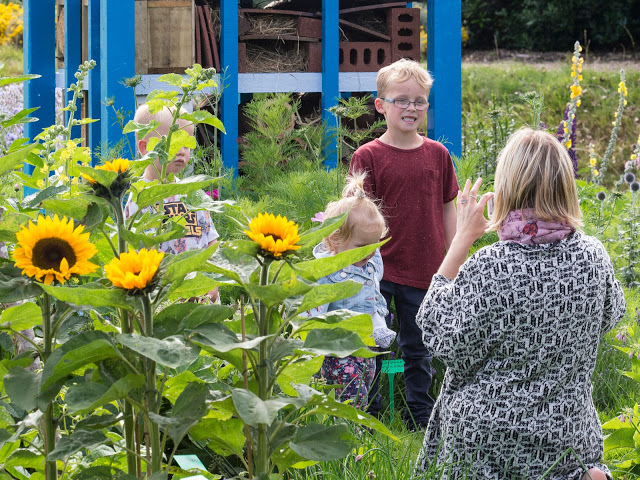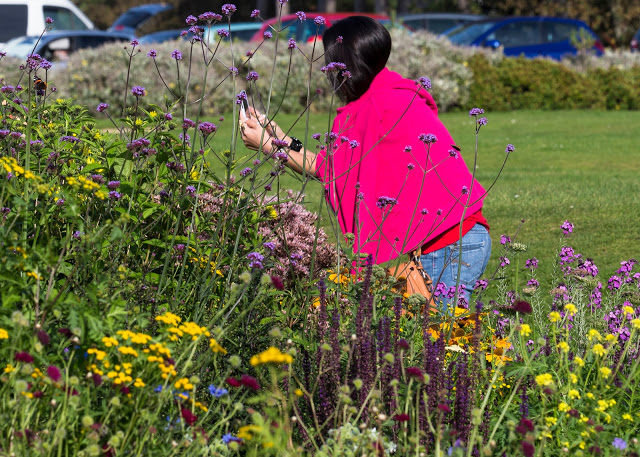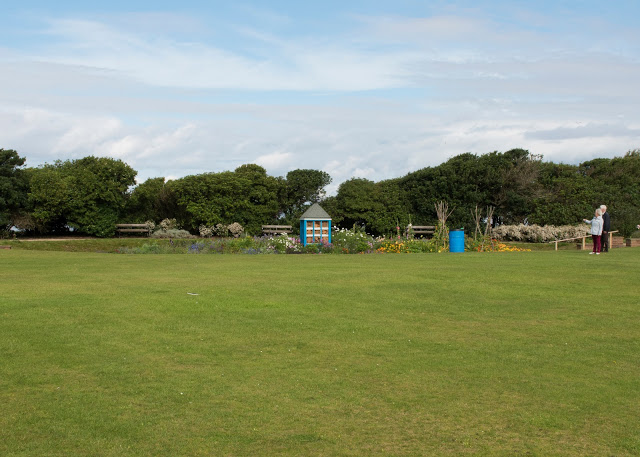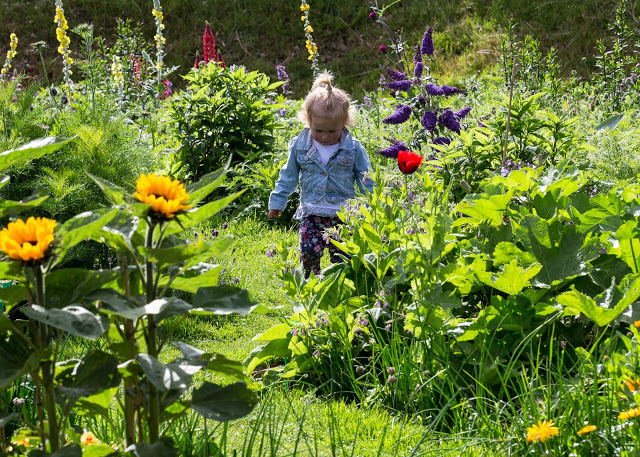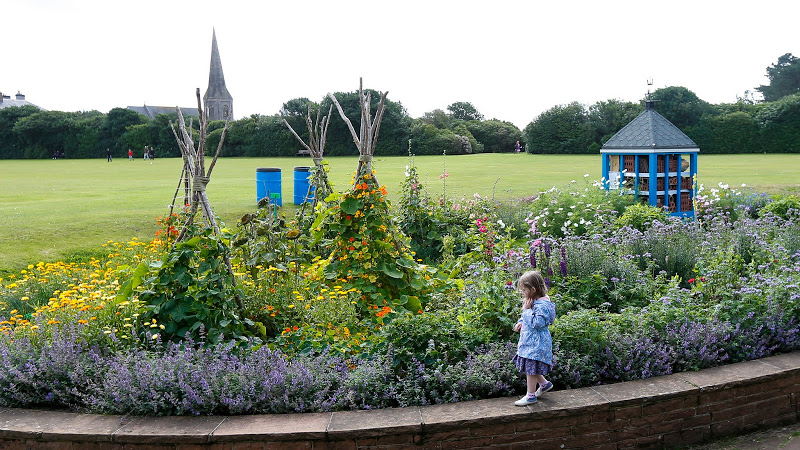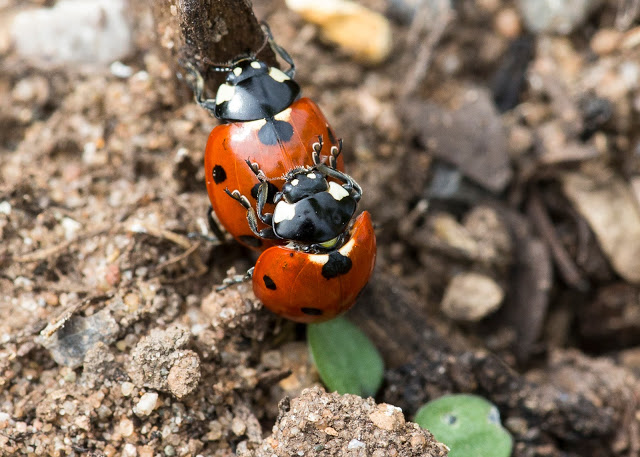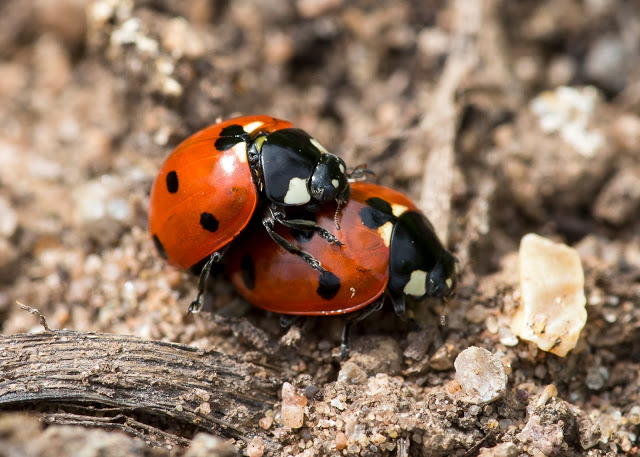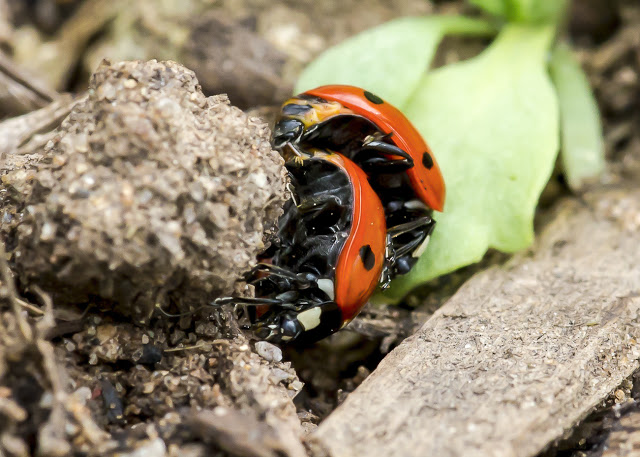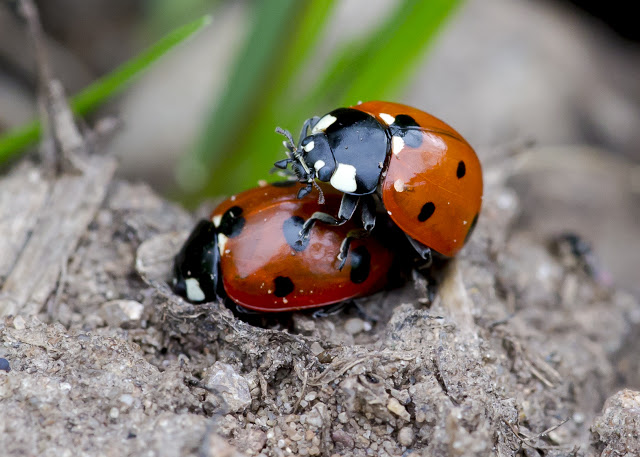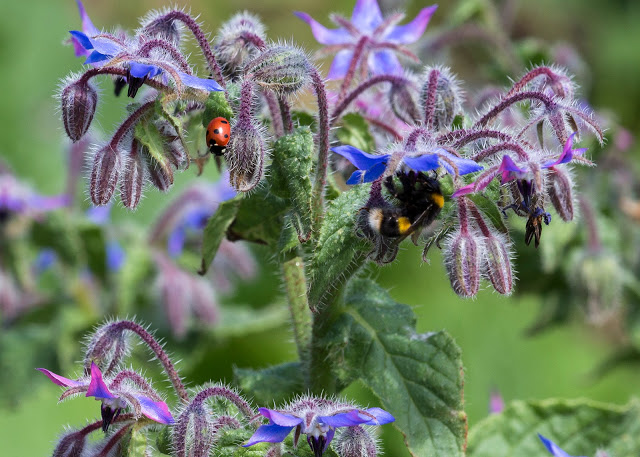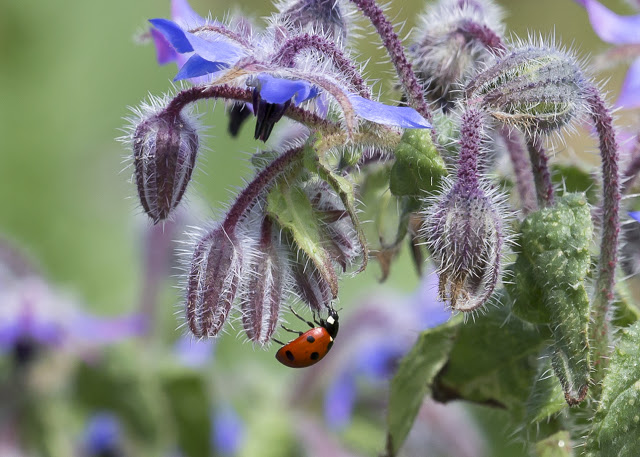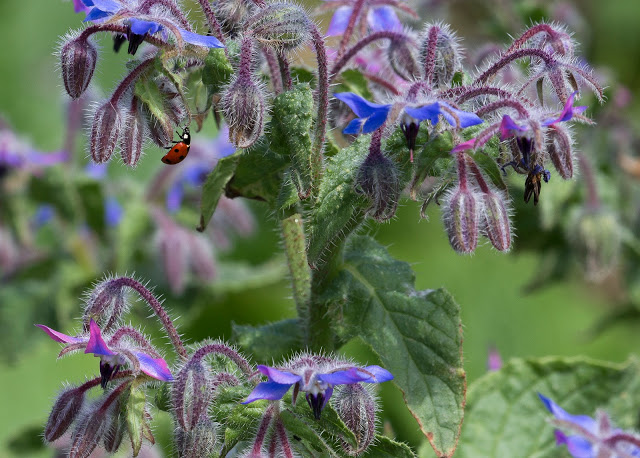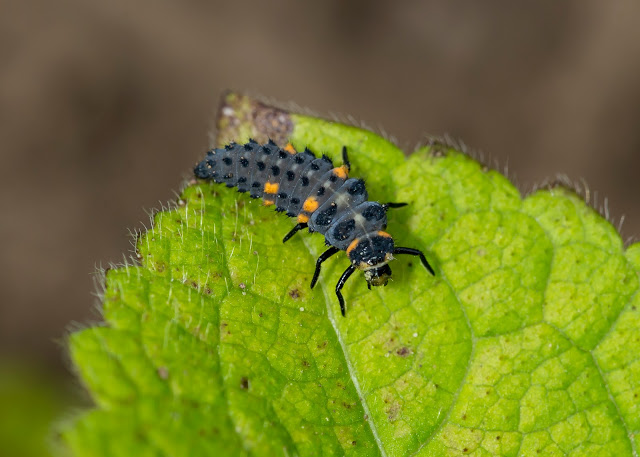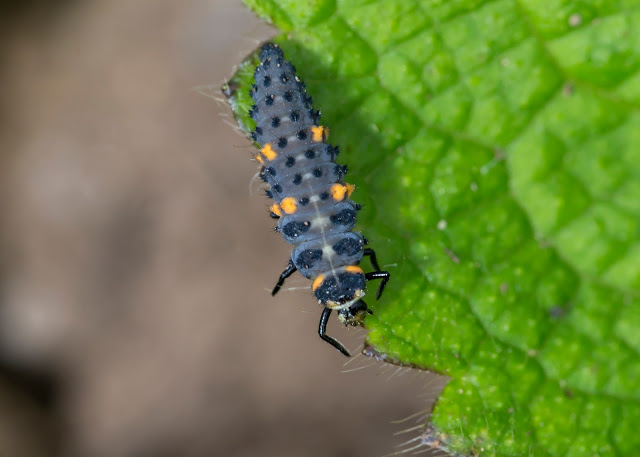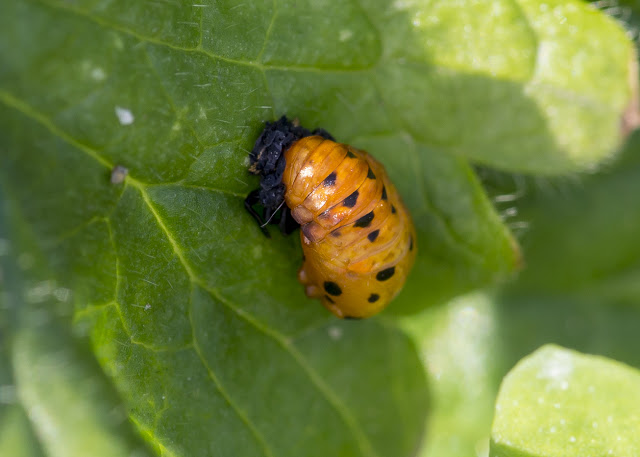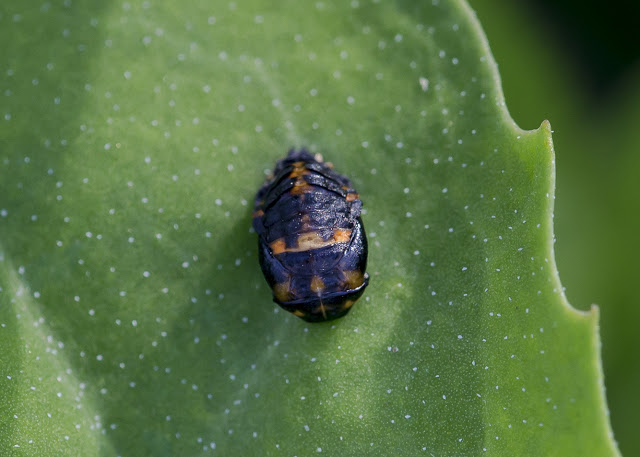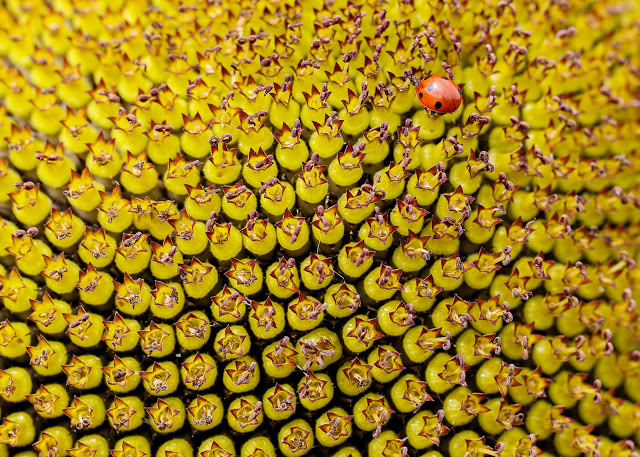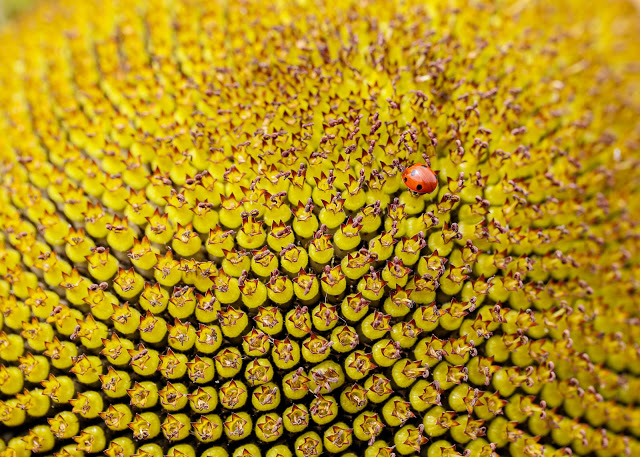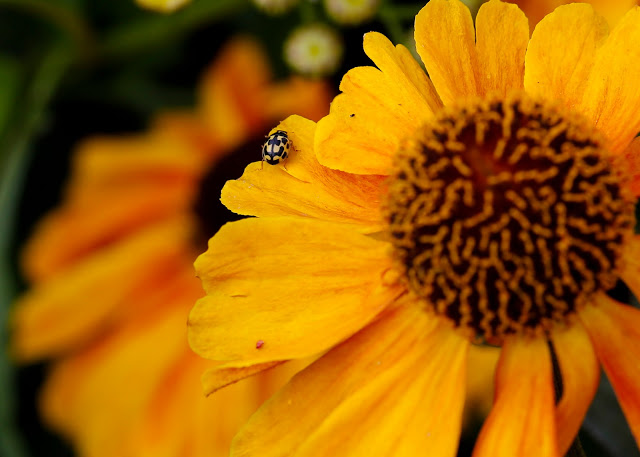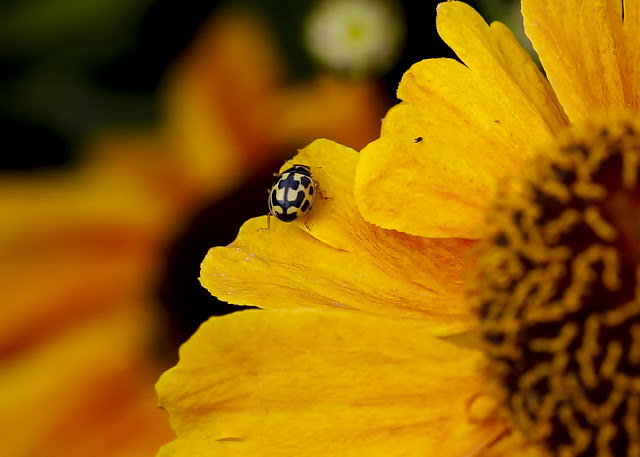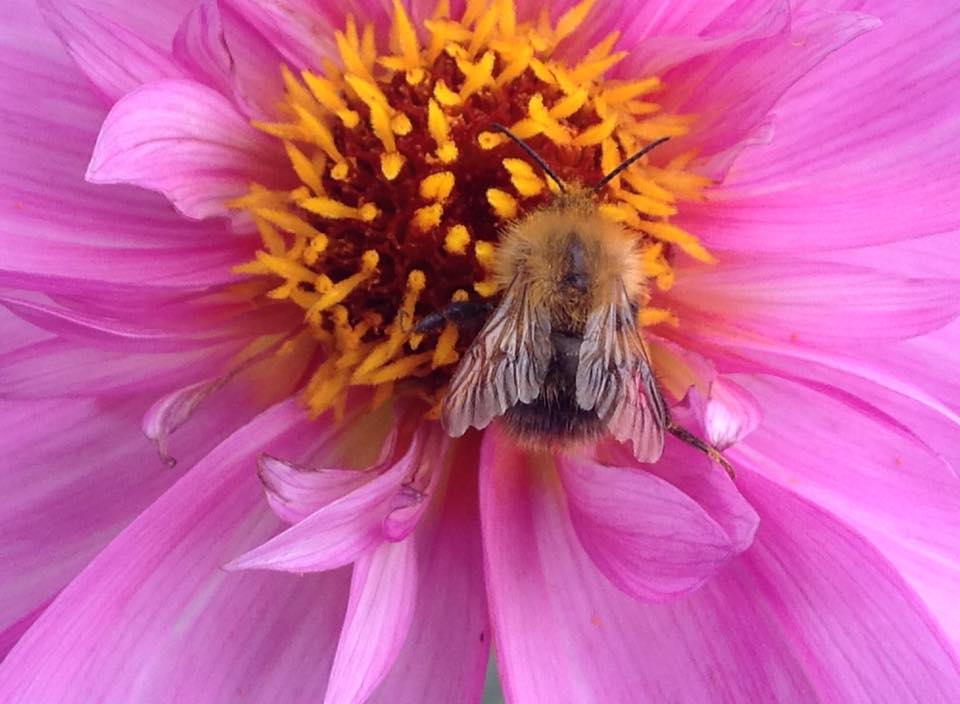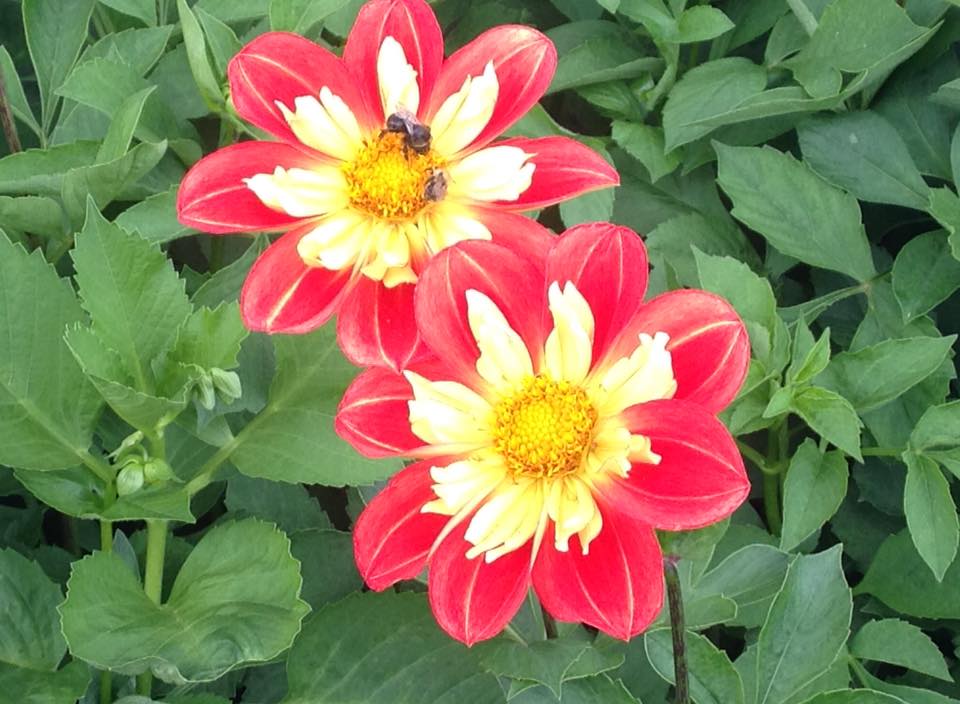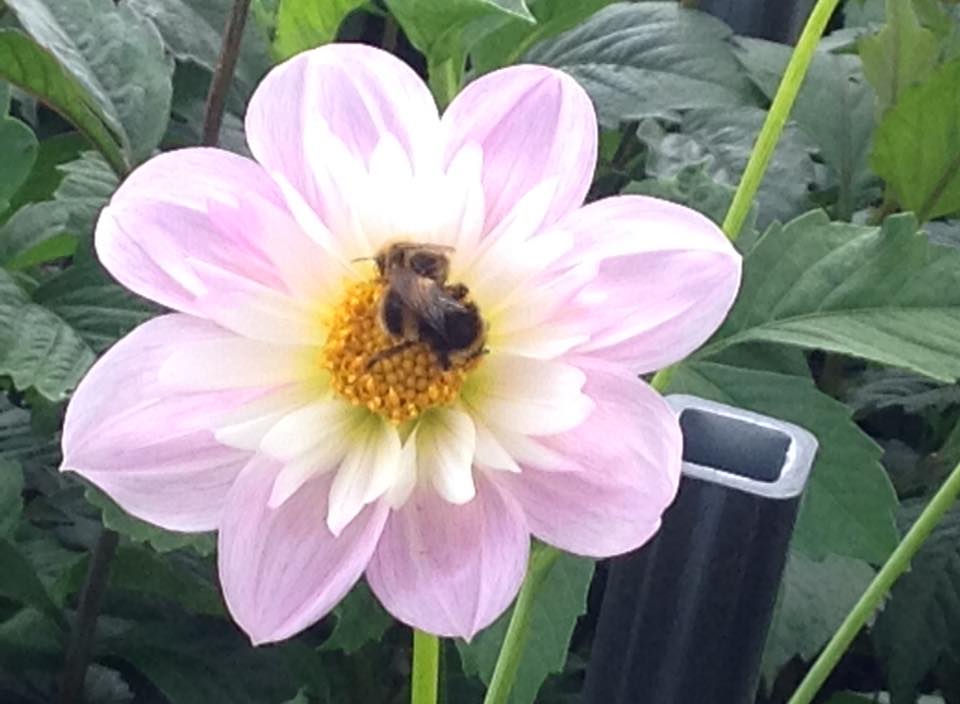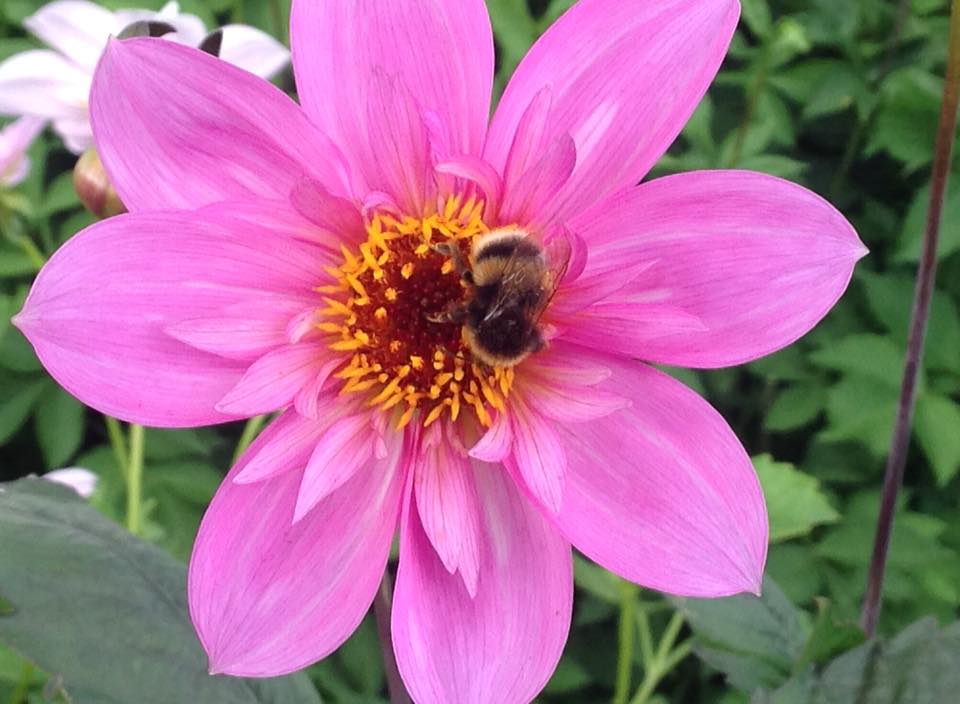Silloth Green Rose and Bee Garden
The Coronation Rose Garden
The Rose Garden on Silloth Green was created in 1953 to celebrate the Coronation of Queen Elizabeth 11.
Problems with Compaction and Rose Sickness
The Rose Garden was extremely popular and well loved by local people. Over the years, however, the clay base became compacted and this caused problems for the roses, which began to struggle.
Replanting the garden with roses was problematic due to a condition known as rose sickness. Roses will not tolerate being planted in earth previously occupied by other roses due to a build up of soil pests and pathogens. The Town Council used this as an opportunity to refresh the garden, by dedicating it to the welfare of diminishing bees, butterflies and other insects. The history of the site was to be respected by including roses that bees and other insects could readily access. Over the Winter of 2014/15, the site was drained by the Council.
Suggestions for creating natural habitats for Bees, Bugs and Butterflies
There are many threats related to the environment and loss of pollinators. Bees and other insects are beset by the same environmental challenges as other species, including habitat loss – degradation and fragmentation; pesticides; and climate change.
An experienced local gardener, Vivian Russell, suggested that creating habitats for nesting, resting and overwintering, and planting nectar and pollen rich plants would provide bees, bugs and butterflies with the type of environment they need to flourish. Vivian’s own garden was already a haven for bees and other insects, growing appropriate plants and protecting habitats for all life cycle stages—larvae, pupae, and adult.
Proposal for New Design layout
Vivian drew up an initial plan for a new design layout in the Heritage Rose Garden. The possibilities presented by this new design to support ‘biodiversity‘ were discussed with Heritage Lottery. HLF approval was gained subject to including a variety of bee friendly roses among the new plantings. Silloth Town Council also gave their support to the basic idea that very small creatures have an important role to play, and their needs – and that of the environment – should be supported by planting different varieties of plants and shrubs as well as bee friendly roses. Vivian’s hand drawn design for the garden was considered by the Council, who made a few further suggestions before approving a revised layout.
After Agreement: Designing, Preparing and Planting for Biodiversity
After agreement was reached, Vivian volunteered more of her time and spent many long hours preparing the ground, laying out the garden, sowing seeds and sourcing the best varieties of plants. She replanted the entire garden with bee and butterfly friendly plants, including 40 roses. The plants were chosen to withstand the wind blowing off the sea, where the garden is exposed at the arcade end.
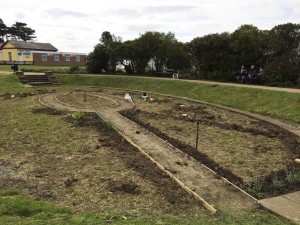
Building a 5 Star Bee and Bug Hotel
Vivian had included a bee and bug home in her design plans. The Council’s Maintenance Team were supportive and built a replica of the Victorian Pagoda, which sits at the top of the hill above the Splash pad. They then erected the new bee hotel structure in the middle of the garden. A weathervane was built by Paul Jameson and added to the rood of the Bee Pagoda.
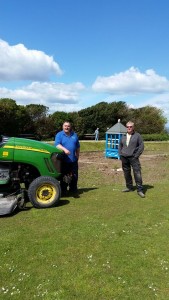
The sunny side of the new bee hotel has been dedicated to nesting sites for solitary bees, while the other three sides serve as winter hibernation and shelter for all the other insects who visit the garden.
Planting
The garden was planted with annuals and perennials. The annuals were all raised locally from seed, the perennials were either divided from larger plants in local gardens or bought from the Garden House Nursery in Dalston, and Larch Cottage Nurseries in Melkinthorpe. The Dahlias were supplied by JRG Dahlias in Milnthorpe, South Cumbria.
Vivian planted the roses in cardboard boxes using fresh soil, as this is the best method of dealing with rose sickness. By the time the cardboard disintegrates, the old soil will be fine for the rose roots to grow in.
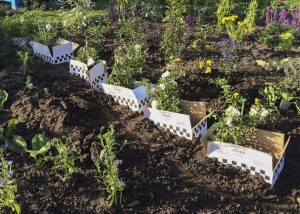
Development of the Garden
Rose hedges were planted to divide the garden into four sections: garden plants for bees facing the sea, wild flowers for bees facing the Arcade; butterfly plants facing the Green; and a decorative veg plot around hazel wigwams with a double row of dahlias, which Vivian created. Plants have been labelled to allow visitors to learn about what works.
As summer 2015 progressed, the new bee garden began to flourish and the bees, bugs and butterflies began to arrive. The following images track progress; click on each to enlarge.
Themed Borders
Photos: Courtesy Vivian Russell
The images that follow illustrate the themed borders in the garden.
Visitors to the Garden
Photos Courtesy Vivian Russell
As the bee garden began to flourish, word spread generating interest in Silloth. Word soon spread and people of all ages have travelled from different locations to visit the garden. Vivian has spent many hours talking to them, discussing the different species of bees, bugs and butterflies as well as the many different plants in the garden. Photos Courtesy Vivian Russell
Ladybirds and Lifecycle
The main reason for the existence of the adult form (besides eating greenflies) is to find a mate and produce the eggs for the next generation.
The ladybird life cycle goes through 4 stages after mating; egg, larva, pupa and then the adult beetle.
The eggs are bright yellow, about 1mm long, and are laid on the underside of leaves. They take about one week to hatch.
At first the newly hatched larva are about 3mm long. They are voracious feeders, and each time they grow they shed their outer skin. This period lasts about three weeks to a month.
During the larval stage they will consume up to 500 plant lice.
The larva sheds its skin one last time and changes into an immobile blob – the pupa. Inside the body dissolves into a soup and then starts reforming as an adult beetle. This process only takes about a week.
When it first emerges from pupation the ladybird looks very pale in colour but its just possible to see where the spots are. After a short time the true colours come through.
The adult stage is often called the ‘imago’. When the ladybird emerges from the pupa it is fully grown, and will remain in this form until it dies.
Photos Courtesy Vivian Russell
The Open Air Laboratories (OPAL) Network
OPAL indicate that bees and wasps that use bee hotels are not dangerous and do not produce a painful sting. They further suggest that making bee hotels is a useful way to help bees, and many species could potentially take up residence.
Red Mason Bees
In spring and early summer, female Red Mason Bees will often build nests sealed with mud. They have a black head and a bright reddish body. Males are smaller and have a tuft of white hair on their face.
‘The Little World.’ By Gary Smith
The short film, ‘The Little World’ by Gary Smith, “follows a female mason bee that has recently hatched, following her through her life as she raises a new generation. Along the way as the bee travels to and fro, the viewer meets other species that live in the little world on the wall.”
Leaf-cutter Bees
Leaf-cutter Bees, make their nest cells out of leaves.
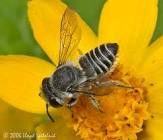
Solitary Bees
There are around 220 species of wild bees in the UK, called ‘solitary’ because they make individual nest cells for their larvae. A wide variety of beneficial solitary wasps will use bee hotels including crabonid, eumenid, and pemphredonid wasps. They provision the nests with a variety of pest species including caterpillars and greenfly, and use a variety of nest materials.
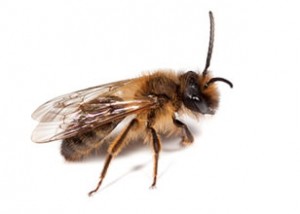
Social Media
A Facebook page for ‘Silloth Bees‘ has been set up to share information about what is happening in the Garden. Many insects as well as bees have arrived as the following extracts from the Facebook page illustrate.
Bedraggled Bee: Coastal wind and wet weather
A poor bedraggled soul on a cold wet September morning in the Bee Garden (photo by Frank Devine who looked after the garden when Vivian was on holiday).
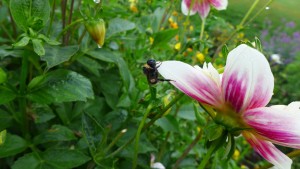
Bumblebees in open centre dahlias
Photos Courtesy Jack Gott
Silver Y Flying Moths
Photos Courtesy Vivian Russell
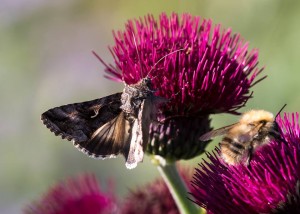
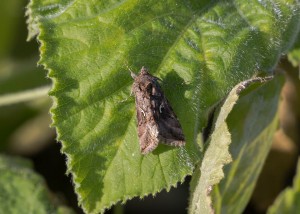
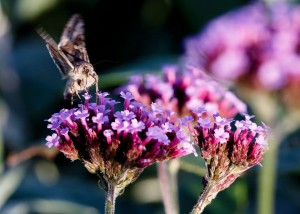
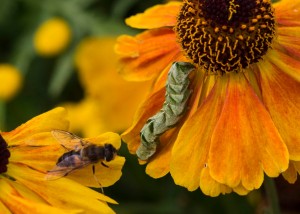
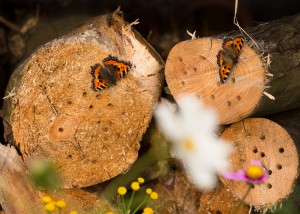
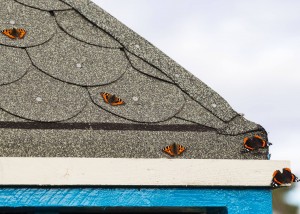
Other wildlife encouraged by the Bee Garden
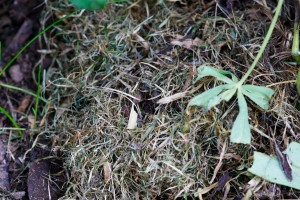
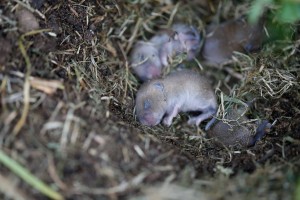
A view of the garden from above
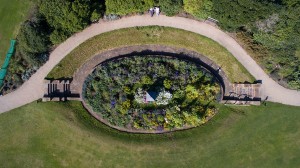
Interpretation
Interpretation panels are in plan, and will be situated at each end of the garden to provide more detail about the heritage of the Rose Garden, problems, replanting to support biodiversity, the types of bees and butterflies the garden is now planted for, information about the life cycle of bumblebees, honeybees and solitary bees, as well as information about the plants and flowers in the garden.
Awards
Vivian’s dedicated work in the garden has been recognised and several awards have been won. Cumbria in Bloom’s ‘Special Category’ Continental Landscapes Trophy was awarded jointly to the Community Garden and the new Bee Loving Garden. In addition these two gardens were individual winners in the Britain in Bloom Royal Horticultural Society ‘It’s Your Neighbourhood‘ Category, each gaining a Level 5 ‘Outstanding’ result. The Town also won the Coastal Town Award. Both gardens were included in the judging, and it’s certain they helped to achieve this award too.
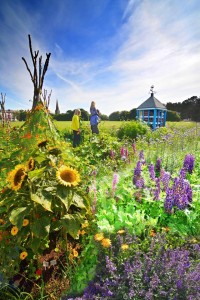
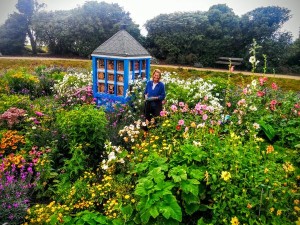
Acknowledgements
A huge thank you is due to Vivian Russell for all her hard work and herculean effort in designing, preparing, planting and caring for the Bee Garden on Silloth Green. Thanks also to Silloth Town Council and staff for support. And thanks to Heritage Lottery Fund for funding the project. Thanks also to Jane Alexander, HLF Grants Officer, for advice and support.
Photos are courtesy of Vivian Russell, Jim Smith, Frank Devine, Mike Hughes and Jack Gott.


